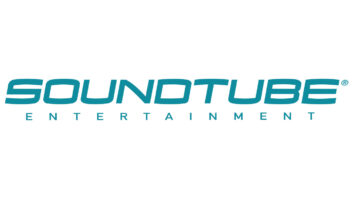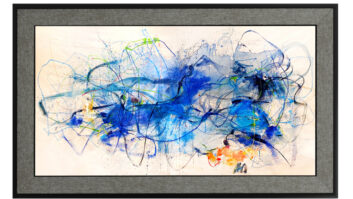Arlington, Va. — Factory-level sales of home, portable and after-market car audio rose a combined 7 percent in 2006 to a record $10.8 billion, thanks almost exclusively to a 32 percent gain in headphone MP3-player sales to $5.56 billion, Consumer Electronics Association (CEA) statistics show.
Although last year’s 7 percent gain was well below 2005’s 29-percent surge, sales in both years easily exceeded the combined markets’ previous peak of $8.59 billion in 2000.
Sales declined in the home audio and aftermarket car audio segments in 2006 and rose only in the portable audio segment, CEA found. Sales of home audio equipment, including home radios, slipped 1.7 percent to $2.52 billion, while sales of after-market car audio, including satellite radio plug-and-play tuners, shrank 13 percent to $1.98 billion. The home audio industry, nonetheless, posted gains in two key segments: components and home theater in a box (HTiB) systems.
Portable audio sales rose 20 percent to $6.34 billion, thanks to a 31 percent surge in headphone MP3 player sales to $5.56 billion. MP3’s gains more than offset a 25 percent decline in the dollar volume of all other portable audio products, including boomboxes, to $784 million.
Here’s a more detailed look at sales in the home and portable audio segments of the industry:
Home audio: The category’s sales slide seems to be bottoming out. Sales slid only 1.7 percent to $2.52 billion in 2006 following a steeper 16 percent decline in 2005. Home audio sales have fallen every year but one since their 2000 peak of $3.74 billion.
In the component-audio segment, sales rose 7 percent to $1.09 billion in 2006 after a flat 2005, largely because component speaker sales rose 12 percent in dollars to $578 million on a unit-sales gain of 4 percent to 6.53 million. Speaker sales were up for the third consecutive year, having risen 16 percent in dollars and 4 percent in units in 2005, and by 23 percent in dollars and 12 percent in units in 2004, CEA said.
In components, receivers stopped hemorrhaging. Receiver sales were flat in 2006, at $437 million despite a 10 percent drop in units to 1.49 million. That followed 2005’s double-digit-percentage drops in units and dollars.
Although component sales seem to have turned a corner, their volume remained well below their 1990 peak of $1.93 billion. In fact, component audio sales have declined every year but five since 1990, and in 2006, their sales were eclipsed for the 10th consecutive year by sales of home systems (HTiBs and compacts combined).
In home audio systems, the HTiB segment grew 8 percent to $789 million in 2006 following two years of decline. HTiB’s dollar gain came despite a 3 percent unit-volume contraction to 3.68 million. Dollar volume in compact systems contracted 21 percent to $486 million on a steeper unit-sales decline of 24 percent to 4.55 million.
All told, combined system sales dropped 5 percent to $1.28 billion on a unit-sales decline of 16 percent to 8.23 million.
Total audio-system sales might well have risen in 2006, however, if CEA included sales of an emerging product category considered by many to represent the future of the compact stereo system. That category, the MP3 (or iPod) speaker station, is not reflected in CEA’s system-sales statistics.
Also in 2006, home radio volume slipped 22 percent in dollars to $158 million, though unit sales were flat at 9.1 million.
Portable audio: Headphone MP3 players were solely responsible for the fourth consecutive year of factory-level portable-audio sales growth in 2006 to a record $6.5 billion, and MP3 players accounted for the majority of portable audio dollar volume for the fourth consecutive year. In 2006, MP3 players accounted for 88 percent of portable audio sales compared with 57 percent in 2004. The association projects MP3 players will account for 90 percent of portable audio sales in 2007.
The portable audio segment had declined in 2001 and 2002 but has since posted annual double- and triple-digit percentage gains, thanks to MP3 players.
Because of home audio’s shrinking sales and MP3 player’s rising sales, sales of portable audio products accounted for the majority of total audio industry volume (home, car and portable combined) for the second consecutive year in 2006. Portable’s share went from 52 percent in 2005 to 58.5 percent in 2006. CEA forecasts the share to grow to 61percent in 2007.
MP3 players have enjoyed continual double-digit percentage gains every year since their 1998 mass-market debut in the United States. In 2006, factory -level MP3 player sales rose 31 percent to an all-time high of $5.56 billion, up from a mere $80 million in 2000. Sales of all other types of portables, on the other hand, fell 25percent in 2006 to $784 million.
Headphone MP3 players accounted for 88 percent of factory-level portable audio dollar volume in 2006, up from the previous year’s 80 percent and headed toward 90 percent in 2007, CEA forecasts show. In units, MP3 players outsold CD headphone stereos by 6.5:1 in factory-level unit sales.
In 2006, factory-level dollar sales of CD-equipped headphone portables fell for the fifth consecutive year, this time by 62 percent in dollars to $144 million and 54 percent in units to 5.88 million.
Sales of battery-operated CD boomboxes are still down from their peak but rose in 2006 by 14 percent in dollars to $220 million on unit-sales growth of 16 percent to 4.94 million. The turnaround, following double-digit percentage declines in 2004 and 2005, might reflect boomboxes’ embrace of new technologies such as flash-memory, MP3 player docks, and satellite radio connectivity.
The boost might be short-lived, however. CEA forecasts a 2007 dollar decline of 4 percent and unit sales decline of 2 percent.
2007 outlook: In 2007, CEA forecasts a slight decline of 1.2 percent in total audio industry sales to $10.7 billion. The association forecasts rising receiver and speaker sales, declines in compact systems and HTiBs, and moderating growth in the maturing MP3 player market.
Portable audio sales will rise 2.5 percent to $6.5 billion on a 5.5 percent gain in headphone MP3 player sales to $5.86 billion. Sales of legacy portables will fall 18 percent to $641 million.
Aftermarket car audio sales will slip 6 percent to $1.86 billion (excluding car video components).
Total home audio sales will slide 7 percent to $2.34 billion because rising component-audio sales won’t offset declines in compacts, HTiBs, and home radios.
CEA also sees components regaining their status as the largest segment of the home audio market after 10 years as number two. Factory-level component sales will rise 5 percent to $1.14 billion, and system sales will decline 18 percent to $1.05 billion.
Among components, speaker sales will rise for the fourth consecutive year, this time by 9 percent in dollars to $630 million and 10 percent in units to 7.18 million. In receivers, CEA forecasts a rise of only 1 percent to $440 million on flat unit sales of 1.49 million. Sales of all other types of home components will also rise 1 percent in 2007, reaching about $70 million.
Home radio sales will shrink by 6percent to $149 million, in CEA’s estimation.
Among systems, CEA forecasts a decline of 18 percent to $1.05 billion on a unit-sales decline of 19percent to 6.66 million units. System sales will be well below their 2000 peak of $2.22 billion.
The outlook is equally dim in 2007 for both HTiBs and compacts. HTiB sales will fall 14 percent in dollars to $682 million and 9 percent in units to 3.34 million. Sales of compact systems in 2007 will drop 24 percent in dollars to $369 million and 27 percent in units to 3.32 million. Compact-system sales will also be well below their peak of $1.78 billion in 2000.













